THE AMERICAN SLAVE COAST offers a provocative vision of US history from earliest colonial times through emancipation that presents even the most familiar events and figures in a revealing new light.
Authors Ned and Constance Sublette tell the brutal story of how the slavery industry made the reproductive labor of the people it referred to as breeding women essential to the young countrys expansion. Captive African Americans in the slave nation were not only laborers, but merchandise and collateral all at once. in a land without silver, gold, or trustworthy paper money, their children and their childrens children into perpetuity were used as human savings accounts that functioned as the basis of money and credit in a market premised on the continual expansion of slavery. Slaveowners collected interest in the form of newborns, who had a cash value at birth and whose mothers had no legal right to say no to forced mating.
This gripping narrative is driven by the power struggle between the elites of Virginia, the slave-raising mother of slavery, and South Carolina, the massive importer of Africansa conflict that was central to American politics from the making of the Constitution through the debacle of the Confederacy.
Virginia slaveowners won a major victory when Thomas Jeffersons 1808 prohibition of the African slave trade protected the domestic slave markets for slave-breeding. The interstate slave trade exploded in mississippi during the presidency of Andrew Jackson, drove the US expansion into Texas, and powered attempts to take over Cuba and other parts of Latin America, until a disaffected South Carolina spearheaded the drive to secession and war, pushing the Virginians to secede or lose their slave-breeding industry.
Filled with surprising facts, fascinating incidents, and startling portraits of the people who made, endured, and resisted the slave-breeding industry, The American Slave Coast culminates in the revolutionary Emancipation Proclamation, which at last decommissioned the capitalized womb and armed the African Americans to fight for their freedom.


Copyright 2016 by Ned Sublette and Constance Sublette
All rights reserved
First edition
Published by Lawrence Hill Books
An imprint of Chicago Review Press Incorporated
814 North Franklin Street
Chicago, Illinois 60610
ISBN 978-1-61374-820-6
Library of Congress Cataloging-in-Publication Data
Sublette, Ned, 1951
The American slave coast : a history of the slave-breeding industry / Ned Sublette, Constance Sublette. First edition.
pages cm
Includes bibliographical references and index.
ISBN 978-1-61374-820-6 (hardback)
1. Slave-tradeUnited StatesHistory. 2. Slave tradersUnited StatesHistory. 3. SlaveryEconomic aspectsUnited States. 4. SlavesUnited StatesSocial conditions. 5. SlavesUnited StatesSexual behaviorHistory. 6. SlaveholdersSouthern StatesHistory. 7. Southern StatesHistory1775-1865. 8. Slave-tradeSouthern StatesHistory. 9. Slave tradersSouthern StatesHistory. I. Sublette, Constance. II. Title.
E442.S82 2015
331.117340973dc23
2015002493
Interior design: PerfecType, Nashville, TN
Printed in the United States of America
5 4 3 2 1
Although it is a record of horror it has an odd, matter-of-fact air about it simply because the infamies that are described were so completely taken for granted.
Bruce Catton, reviewing the 1965 edition of
Documents Illustrative of the History of the Slave Trade to the Americas
Contents
Index
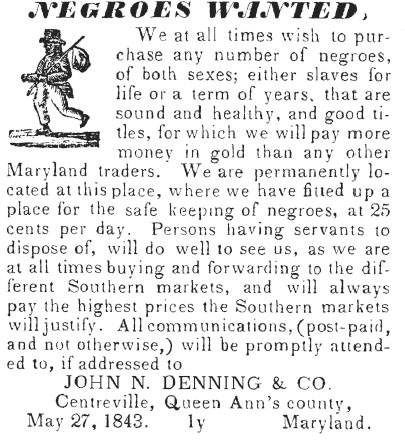
Kent News, Chestertown, Maryland.
Introduction
T HIS IS A HISTORY of the slave-breeding industry, which we define as the complex of businesses and individuals in the United States who profited from the enslavement of African American children at birth.
At the heart of our account is the intricate connection between the legal fact of people as propertythe chattel principleand national expansion. Our narrative doubles, then, as a history of the making of the United States as seen from the point of view of the slave trade.
It also traces the history of money in America. In the Southern United States, the peculiar institution of slavery was inextricably associated with its own peculiar economy, interconnected with that of the North.
One of the two principal products of the antebellum slave economy was staple crops, which provided the cash flowprimarily cotton, which was the United States major export. The other was enslaved people, who counted as capital and functioned as the stable wealth of the South. African American bodies and childbearing potential collateralized massive amounts of credit, the use of which made slaveowners the wealthiest people in the country. When the Southern states seceded to form the Confederacy they partitioned off, and declared independence for, their economic system in which people were money.
Our chronology reaches from earliest colonial times through emancipation, following the two main phases of the slave trade. The first phase, importation, began with the first known sale of kidnapped Africans in Virginia in 1619 and took place largely, though not entirely, during the colonial years. The second phase, breeding, was the era of the domestic, or interstate, slave trade in African Americans. The key date herefrom our perspective, one of the most important dates in American historywas the federal prohibition of the importation of persons as of January 1, 1808. After that, the interstate trade was, with minor exceptions, the only slave trade in the United States, and it became massified on a previously impossible scale.
The conflict between North and South is a fundamental trope of American history, but in our narrative, the major conflict is intra-Southern: the commercial antagonism between Virginia, the great slave breeder, and South Carolina, the great slave importer, for control of the market that supplied slave labor to an expanding slavery nation. The dramatic power struggle between the two was central to the Constitutional Convention in Philadelphia in 1787 and to secession in 186061.
is an overview, intended as an extended introduction to the subject.
, which begins the main chronological body of the text, describes the creation of a slave economy during the colonial years.
centers on the US Constitutions role as hinge between the two phases of slave importation and slave breeding.
cover the years of the slave-breeding industry, from the end of the War of 1812 through emancipation: the rise, peak, and fall of the cotton kingdom.

Note: This book describes an economy in which people were capital, children were interest, and women were routinely violated. We have tried to avoid gratuitously subjecting the reader to offensive language and images, but we are describing a horrifying reality.

Part One

The Capitalized Womb
Next page
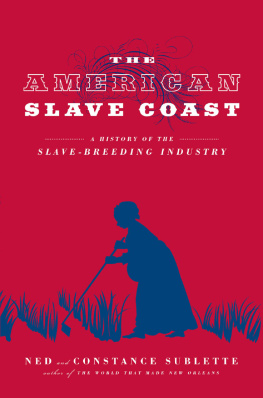

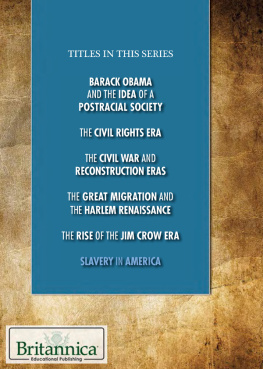


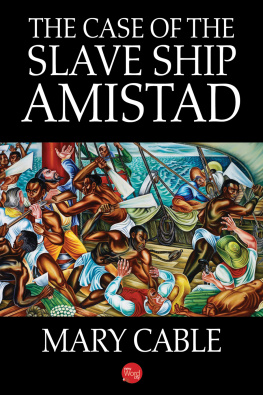
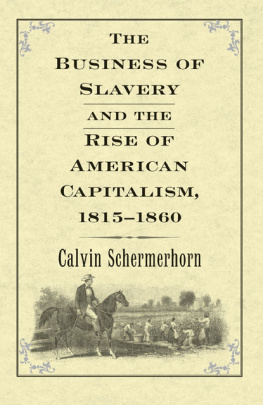
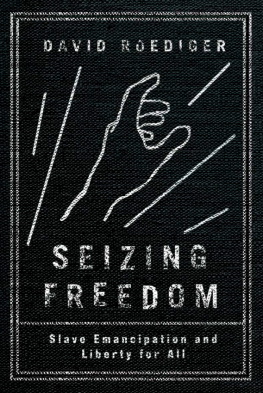




 Part One
Part One 